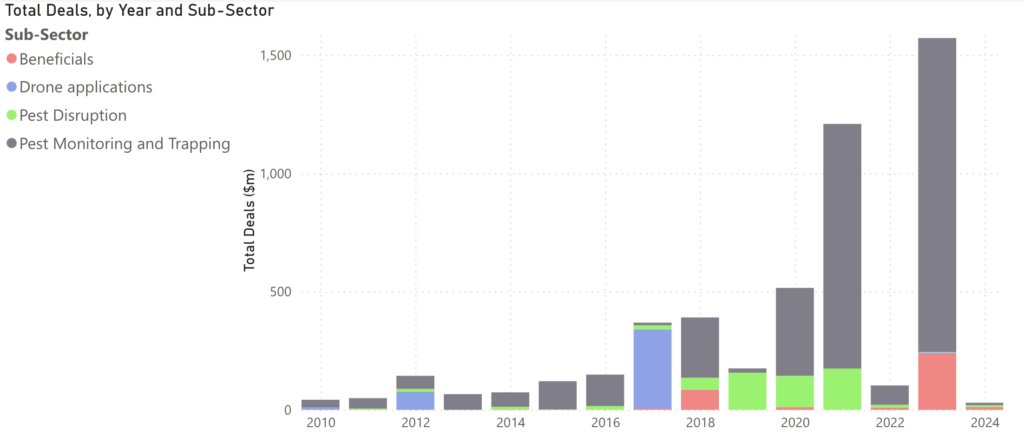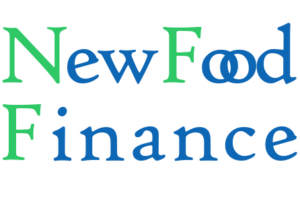Integrated Pest Management goes High-Tech

Integrated pest management (IPM) refers to farm best practices that minimise use of chemical pesticides, for example only to spray when pests are actually present, having passed a critical threshold, and use of non-chemical alternatives including natural pest predators.
IPM comprises common sense practices, and is a mainstay of lower intensity systems such as organic and regenerative agriculture, but it is attracting massive investment, has seen huge, recent corporate takeovers, and is getting an AI makeover, especially in pest monitoring, as regulatory pressures and incentives mount to cut pesticide use.
The New Food Finance database of financial transactions, companies and technologies, charts a growing environmental transition in food production, across farm inputs, monitoring and production, as well as in alternative proteins.
We divide the IPM sector broadly into four sub-sectors, as shown in the chart above: pest monitoring and trapping; pest disruption; use of beneficial predators; and drone application of beneficials. We further divide these sub-sectors into more than 15 markets and 30 technologies.
We identify 84 “pure play” IPM companies in our database, namely companies where IPM is a major product or service, as opposed to a fringe business.
Collectively, these 84 companies have raised $4.9 billion over the last 15 years, with annual total deals rising steeply, reaching $1.5 billion in 2023 alone – see chart above.
The capital was raised mostly as private capital, across 276 fund-raisings, from 315 separate investors.
AI is making in-roads in the sector, especially in pest monitoring. We find that 13 of our 84 companies reference the use of AI, Machine Learning or algorithms in their core technlogy.
For example, multiple companies use real-time computer vision to identify trapped insects, and to report these captures to a remote, online dashboard. Perhaps even more advanced, several companies use machine learning to recognise trapped fungal spores, and to summarise these findings and issue alerts accordingly.
The goal of these technologies is to simplify time-consuming monitoring – where traditionally the farmer would set traps, monitor these, and in the case of fungal spores, send the results for lab-based identification. By cutting these steps, these technologies can increase pest monitoring, and so reduce use of pesticide sprays only to when these are necessary, where pests are present, and have passed a threshold to inflict serious crop losses.
